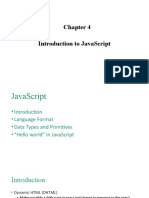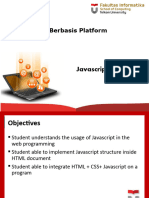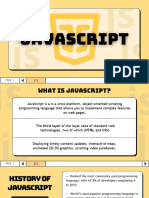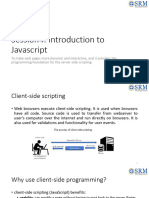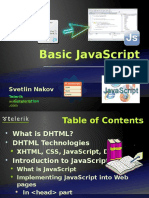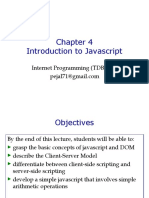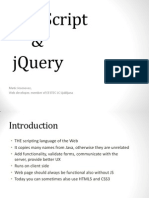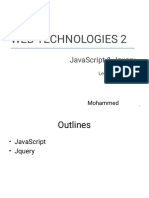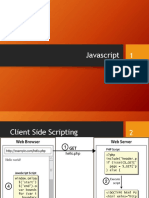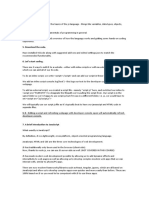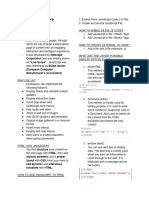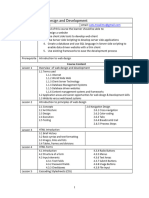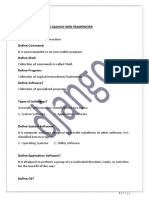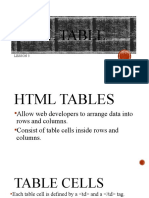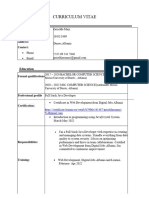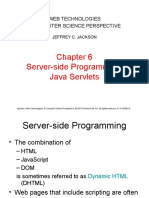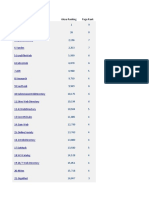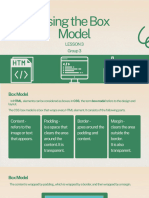0% found this document useful (0 votes)
10 views20 pagesCatchup 1 - Intro To JS
The document outlines a session on JavaScript, covering its role in adding interactivity to websites alongside HTML and CSS. It includes a detailed agenda, basic syntax, the Document Object Model (DOM), and practical uses of JavaScript such as toggling menus and validating forms. Additionally, it emphasizes the importance of engaging with the session through questions and interactions.
Uploaded by
patricia.tchingueCopyright
© © All Rights Reserved
We take content rights seriously. If you suspect this is your content, claim it here.
Available Formats
Download as PDF, TXT or read online on Scribd
0% found this document useful (0 votes)
10 views20 pagesCatchup 1 - Intro To JS
The document outlines a session on JavaScript, covering its role in adding interactivity to websites alongside HTML and CSS. It includes a detailed agenda, basic syntax, the Document Object Model (DOM), and practical uses of JavaScript such as toggling menus and validating forms. Additionally, it emphasizes the importance of engaging with the session through questions and interactions.
Uploaded by
patricia.tchingueCopyright
© © All Rights Reserved
We take content rights seriously. If you suspect this is your content, claim it here.
Available Formats
Download as PDF, TXT or read online on Scribd
/ 20
